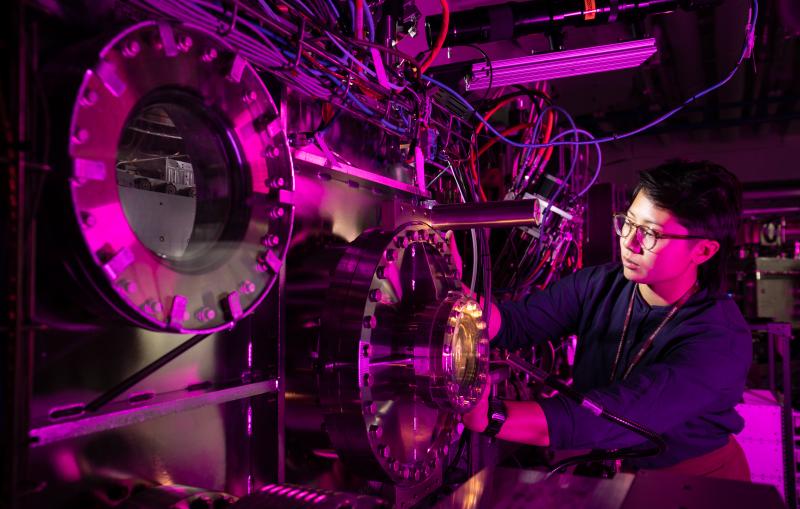Kayla Ninh at LCLS’s ChemRIX Hutch 2.2 in Near Experimental Hall.

The high repetition rate of LCLS-II combined with advanced instrumentation for time-resolved resonant inelastic X-ray scattering (RIXS) will map the energy distribution and evolution of occupied and unoccupied molecular orbitals of model complexes and functional photo-catalysts in liquid environments. Understanding the fundamental processes of photo-chemistry is essential for directed design of photo-catalytic systems for chemical transformation and solar energy conversion that are efficient, chemically selective, robust, and based on earth-abundant elements. The beamline will have two separate instruments with fixed interaction points – qRIXS and chemRIXS. In the hutch the qRIXS endstation will be situated upstream, while the chemRIXS endstation will be located downstream.
Kayla Ninh at LCLS’s ChemRIX Hutch 2.2 in Near Experimental Hall.
